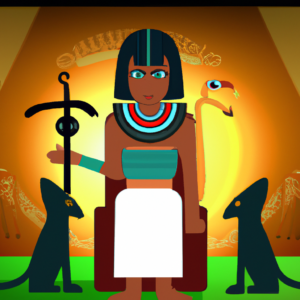 Exploring the Rich Tapestry of India’s Largest Tribe
Exploring the Rich Tapestry of India’s Largest Tribe
Introduction:
India, often celebrated for its diversity, is a land of myriad cultures, languages, and traditions. At the heart of this vibrant mosaic lies the tapestry of its indigenous people, each thread weaving a unique story of resilience, heritage, and identity. Among the numerous tribes that call India home, one stands out as the largest—the Gond tribe. Spread across various states, the Gonds have etched their presence in the history and culture of India, contributing to the country’s rich social fabric.
Historical Roots:
The Gond tribe traces its roots deep into the annals of history, with a legacy that spans centuries. Believed to be descendants of the great Gondvana Empire, the tribe’s name is thought to have originated from the Sanskrit word “Kond,” meaning green mountains. Historically, the Gonds have predominantly inhabited the central and eastern regions of India, with significant populations in states like Madhya Pradesh, Chhattisgarh, Maharashtra, and Odisha.
Cultural Diversity within Unity:
Despite being the largest tribe in India, the Gonds are not a homogenous group. Instead, they are a tapestry of sub-groups, each with its distinct cultural nuances, languages, and traditions. This diversity within unity is a testament to the dynamic nature of Indian culture, where different communities coexist, enriching the broader social fabric.
Language and Communication:
Language serves as a powerful tool for the Gond people to express their identity and preserve their cultural heritage. Gondi, a Dravidian language, is the primary means of communication within the tribe. However, due to the vast geographical spread of the Gond community, regional variations in language and dialects have emerged, further highlighting the richness of their cultural diversity.
Artistic Expression:
One of the most captivating aspects of Gond culture is its artistic expression. The Gonds are renowned for their intricate tribal art, characterized by bold patterns, vibrant colors, and symbolic motifs. Traditionally, this art adorned the walls of homes and served as a form of storytelling, narrating the tribe’s myths, legends, and daily life. Gond art has transcended its cultural boundaries and gained international recognition, with contemporary artists incorporating these unique aesthetics into various forms of visual expression.
Spirituality and Beliefs:
The spiritual beliefs of the Gond tribe are deeply rooted in nature and the supernatural. Traditionally animists, the Gonds worship a pantheon of deities representing natural elements, animals, and ancestral spirits. The connection between the tribe and the environment is evident in their rituals, festivals, and everyday practices, emphasizing a harmonious coexistence with nature.
Social Structure:
The social structure of the Gond tribe reflects a sense of community and mutual interdependence. The tribe traditionally follows a patriarchal system, with the village headman playing a crucial role in governance and dispute resolution. Social cohesion is maintained through collective celebrations, ceremonies, and communal activities that reinforce a sense of belonging and shared identity.
Challenges and Resilience:
Like many indigenous communities around the world, the Gonds have faced challenges ranging from displacement to the erosion of their traditional way of life. Modernization and development projects have often disrupted the delicate balance between the Gond people and their natural surroundings. However, the tribe’s resilience and determination to preserve their cultural heritage have fueled efforts to address these challenges.
Empowerment and Education:
In recent years, there has been a growing recognition of the need to empower and uplift indigenous communities, including the Gonds. Educational initiatives aimed at preserving Gondi language and culture have gained momentum, fostering a sense of pride and identity among the younger generation. Non-governmental organizations and government interventions have played a crucial role in providing access to education, healthcare, and economic opportunities for the Gond community.
Preserving Cultural Heritage:
Preserving the cultural heritage of the Gond tribe requires a delicate balance between honoring tradition and adapting to the changing socio-economic landscape. Initiatives that promote sustainable development, cultural exchange, and the documentation of oral traditions contribute to safeguarding the essence of the Gond way of life. Museums and cultural institutions also play a vital role in showcasing Gond art and artifacts, allowing a broader audience to appreciate and understand the depth of this indigenous culture.
Conclusion:
The Gond tribe, as the largest indigenous community in India, stands as a living testament to the country’s rich cultural diversity. Their vibrant traditions, artistic expressions, and spiritual beliefs contribute to the unique tapestry of Indian heritage. As the world evolves, it is imperative to recognize and celebrate the resilience of indigenous communities like the Gonds, ensuring that their stories continue to be woven into the fabric of our collective human history. In embracing and preserving the cultural richness of the Gond tribe, we embark on a journey that not only honors the past but also shapes a more inclusive and harmonious future.